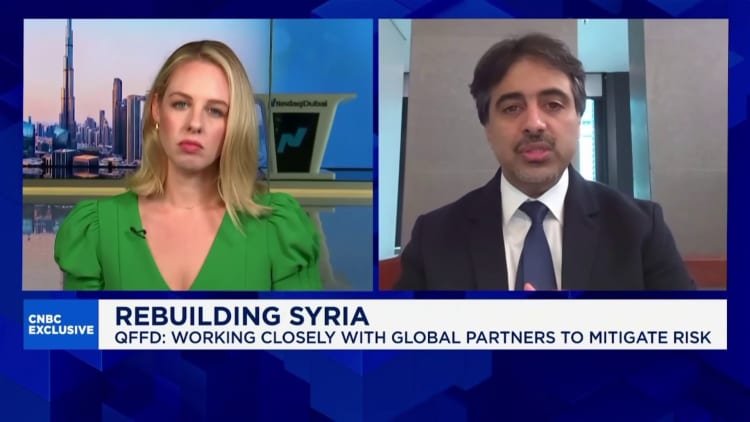U.S. Sanctions on Syria: A Complex Economic Landscape
In May 2025, during a speech at the Ritz-Carlton in Riyadh, former U.S. President Donald Trump made a surprising announcement: he would fully lift long-standing tariffs on Syria. This decision was expected to rejuvenate Syria’s struggling economy. However, by August of the same year, the Trump administration imposed a staggering 41% tariff on Syrian imports, making it the highest in the world.
The U.S.-Syria Trade Dynamic
Despite the sanctions, there is a limited trade relationship between the U.S. and Syria. According to the Observatory for Economic Complexity, Syria exported approximately $11.3 million worth of goods to the U.S. in 2023 while importing $1.29 million in American products, leading to a trade deficit for the U.S. Trump has stated that these tariffs are meant to address trade imbalances, although specific commentary regarding Syria has been scarce.
Regional experts contend that as Syria endeavors to rebuild from years of conflict, additional burdens such as tariffs could further hamper its economic recovery. "Syria is in dire need of substantial foreign investment to kick-start reconstruction," noted Giorgio Cafiero, CEO of Gulf State Analytics. He remarked that while lifting many sanctions was a positive step, the imposition of severe tariffs might restrict potential trade avenues.
A Nation in Crisis
The U.S. has categorized Syria as a state sponsor of terrorism since 1979, with sanctions introduced in 2004 and tightened in 2011 during the Assad regime’s violent response to protests. Over the last 14 years, Syria has faced relentless turmoil, including civil war and acts of terrorism, particularly the rise of ISIS in 2014 and subsequent military interventions.
The recent overthrow of Bashar Assad’s regime has opened a new chapter for Syria. Ahmed al-Sharaa, the new president, has established a transitional government, yet the country is still mired in sanctions, primarily those from the U.S., which deter international engagement.
After sanctions were lifted in June, delegations from various nations, including the U.S. and Gulf states, visited Syria, expressing intentions for reconstruction support. However, sectarian violence and ongoing military strikes have dominated the landscape.
Deteriorating Infrastructure and Humanitarian Needs
The humanitarian situation in Syria remains dire. More than two-thirds of the nation’s electricity grid is inoperative, with cities like Aleppo and Damascus grappling with daily blackouts. In many rural regions, electricity is virtually nonexistent.
"H.A. Hellyer, a senior fellow at the Royal United Services Institute, emphasized that Syria’s economy is teetering on the edge of collapse. Without immediate and effective measures, recovery may be unattainable," he stated.
Amidst these challenges, Qatar has initiated a gas supply project intended to enhance Syria’s electricity by up to 40%, a critical support for over 5 million citizens. Fahad Al-Sulaiti from Qatar Fund for Development mentioned that financial backing from nations like Qatar and Saudi Arabia is crucial, especially with tariffs complicating trade relations with the U.S.
The Implications of High Tariffs
Economic analysts point out that while the 41% tariff may seem significant, its practical impact might be limited, given the minimal trade volume. However, the symbolic weight of this decision could be immense. "Syria being singled out for the highest tariffs sends a clear signal from the Trump administration," Cafiero asserted. It implies that while the U.S. might ease its economic restrictions, it will do so under strict conditions defined by U.S. foreign policy.
Many speculate that these tariffs could compel Syria to normalize relations with Israel, amidst ongoing Israeli military actions within Syrian territory. This economic strategy resembles a type of leverage on Syria’s new government, intended to influence its future political decisions.
Security experts caution that without adequate support—economic, humanitarian, or diplomatic—the risk of renewed conflict looms large. The U.S. envoy to Syria, Tom Barrack, has reiterated Washington’s commitment to support the new government but has not fully addressed the implications of the tariffs.
Conclusion
The imposition of high tariffs on Syria represents a complex interplay of symbolic and practical economic effects. While the immediate financial repercussions may be limited, the broader diplomatic implications signal the U.S. intent to maintain influence over Syria’s future trajectory. The nation faces a precarious path to recovery that heavily depends on international cooperation and internal stability.
